

| Circe |
Thursday, July 9, 2009 Before continuing to remove hardware, I wanted to clean up aft end of the saloon (where the galley had been), the engine room, and the spaces beneath the cockpit--areas that had been inaccessible before removing the engine. Using more degreaser, I soaked and scrubbed these areas to remove the worst of the problem. While I let things dry off a bit, I rigged up a fan over the forward hatch to pull air through the boat and promote drying and freshening, now and going forward. |
|
I continued more or less where I left off with the hardware removal and overall boat-stripping. I began in the head, where I disconnected some copper tubing leading to a fresh-water inlet and vent for the MSD and cut the discharge line; water flowed out, but it appeared clean, fortunately--or at least not black. I wasn't sure how the head was secured to the platform, but one swift kick released it from its mounts, after which I gingerly carried it up on deck and then tossed it as far away from the boat as I could. |
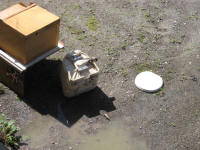
 |
|
After cleaning up the head platform a bit, I removed the chainplates, which came out without too much trouble. The 1/4" bronze chainplates themselves appeared to be in pretty good condition at first glance, though I'd need to clean off the old paint and such before I could make a determination. The bolts were a mish-mash of bronze and stainless. |
 |
| The starboard aft chainplate, as installed, barely made contact with the knee; the bolts passed through almost at the inboard edge of the knee, and were installed at odd angles. |
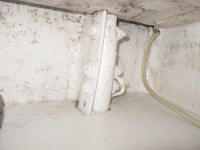 |
|
I continued in the head and removed a
cosmetic trim piece over the mast support beam, which hid wiring leading
to the mast and across the boat. I cut and removed all the wires
(lots of lamp cord and Romex) and anything else that was in the head
compartment, and them moved aft to the saloon. |
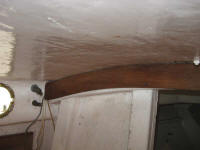

 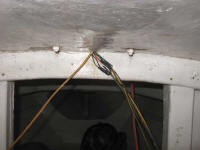 |
|
I worked my way aft through the saloon, removing genoa tracks (two sets per side), handrails, companionway trim, instruments, and the remains of the electrical system and panels. All the trim and hardware was bedded in lots of silicone; it was impossible to remove some of the companionway trim without damaging it (though it was slated for replacement anyway). |
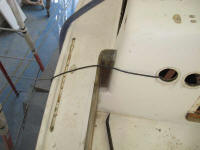

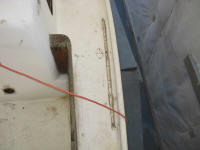 
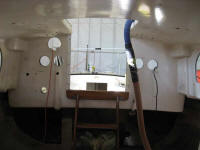
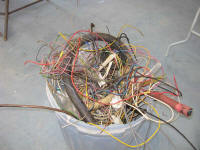 |
|
The mast step was a custom arrangement that I'd not seen before. The large plate and welded mast base turned out to be secured to the deck with two through bolts and four machine screws threaded into tapped, blind holes. Beneath the raised step itself was a large mass of solid fiberglass. |
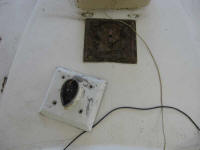 |
|
I removed the screws securing the cockpit coamings, but the coamings themselves were secured with plenty of silicone, so I didn't remove them right away; a test pry with a crowbar indicated that the coamings would probably be coaxed free with a bit of work, but time would tell. |
|